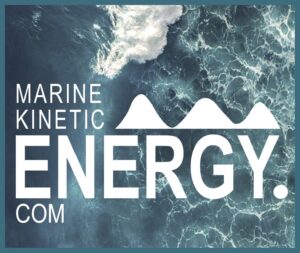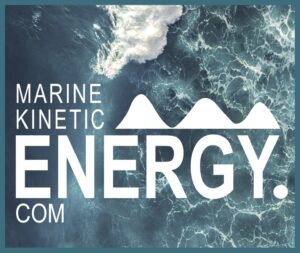On earth, water moves around us in numerous states. The movement of water depends upon the process known as the hydrologic cycle. When the sun shines on the oceans, the water evaporates and forms clouds. When the clouds become dense and heavy, they become a reason for rainfall or snow.
This snow and rain gather in streams and rivers, eventually flowing back to the ocean. This water movement creates an enormous opportunity for us to harness helpful energy. This method of generating power is not new for humans, as we have been capturing energy with the help of moving water for thousands of years.
Harnessing the power of seawater to produce electricity or hydroelectric power is becoming the largest source of renewable electricity. This article will discuss marine power plants’ benefits and drawbacks.
Therefore, keep reading the article to learn about the deep water power plants and their impact on our environment.
Advantages and Disadvantages of Deep-Water Powerplants
The energy created by hydropower does not emit any air pollution or greenhouse gas. Therefore, it is becoming a good source of energy for this planet.
However, despite all the benefits of the energy created by the hydropower plant, it has some negative impacts on the environment. To generate the power using moving water, we install damns on the rivers that can degrade water quality.
Moreover, the damns can also have a damaging impact on the aquatic and riparian habitat. These dams block the migration passage of the fish and impact the local communities near the rivers. Therefore, it is a suggestion that the professionals consider the benefits and drawbacks of any hydropower development before starting the project.
If done right, hydropower can become a nonpolluting source of electricity for this planet. With the help of hydropower, we will be able to decrease our dependence on fossil fuels and will be able to save our world from global warming.
Advantages Of Deep-Water Powerplants
The fuel of hydropower is water which means that, unlike fossil fuel, the water source to create electricity will not emit any pollution. Hydropower doesn’t pollute the air like fossil fuels, natural gas, and coal.
Deep-water power plants rely on the water cycle driven by the sun. It is the reason why it is a renewable source of energy. Hydropower is always available for our energy needs and can control water flow using turbines and produce the electricity we need.
There are numerous other benefits of installing deep water power plants besides generating clean electricity. These hydropower plants create reservoirs that offer recreation opportunities. Usually, the hydropower installation requires public access to the pool, allowing the public to take advantage of these opportunities.
Disadvantages Of Deep-Water Powerplants
Deep-water power plants can hurt fish life. The fish might be unable to migrate upstream or downstream to the ocean due to the damns. However, while building the dam, the professionals can aid upstream fish passage through the fish ladders or elevators. Similarly, the turbine intakes using racks or screens can be an efficient way to aid the downstream fish passage.
Another drawback of hydropower is that it can affect the water’s quality and flow. Due to hydropower plants, the level of oxygen in water can reduce, which can harm the water’s habitats.
Submarine Power Plant: A form of Generating Energy Under Water Pressure
We all know that when we dive into the seawater, the pressure of water increases in the deep sea. The Norwegian scientists of the SINTEF organization want to use this pressure of deep water by building a power plant on the ocean floor.
The concept is that by opening a small door in a submarine underwater, the water will flow inside the submarine with enormous force. It is the energy that the professionals will utilize. In creating the submarine power plant, the turbines will connect to the larger tanks with a depth of about 1300 to 2600 feet.
After opening the turbine, the water will rush in and turn the turbine. This mechanical energy will help us create electricity. After the water tanks become filled with water, the turbines will run in reverse and function as a pump. In this way, the water will go up at the top. This method of sending the water at the top is the pumped storage method.
According to Schramm, the pumped water plant is a hydroelectric plant that gets charged up with the help of pumping water to the upper reservoir after it passes through the turbine.
FAQS
Why are Hydropower Plants better than Conventional Power Plants?
The storage capacity and flexibility of the hydroelectric power plants make them an efficient and economical way of producing energy. Moreover, they are an intermittent source of renewable energy. It is the reason why hydropower plants are better than conventional power plants because their source of fuel is water.
How can Hydropower Project be Helpful?
Hydropower project not only provides benefits of creating electricity, but it also helps in flood control. Moreover, it is an efficient source of irrigation and clean drinking water. Remember that hydropower is affordable and provides low-cost electricity and durability compared to other energy resources.
What is Hydropower Resources?
A hydroelectric power plant is a renewable energy source that generates power using dam water or the natural flow of a river or any other water body. It shows that hydropower resources provide renewable energy without creating any pollution.
How Can We Take Benefit from the Kinetic Energy of the Moving Water?
All types of hydropower facilities get power through the kinetic energy of the moving water. The hydropower plant has turbines and generators that convert this kinetic energy into electricity. After generating the electricity, this goes to the powerhouse, industries, and businesses.
How Can We Make Energy-Efficient Production?
Energy-efficient production means reducing the use of electricity and CO2 emission. In the energy-efficient production process, the professionals connect the data of energy production so that they can analyze the consumption of energy. Moreover, it helps them explore the energy productivity of machines, processes, and plants. With the help of these energy-efficient production measures, we can improve productivity and efficiency all around.

